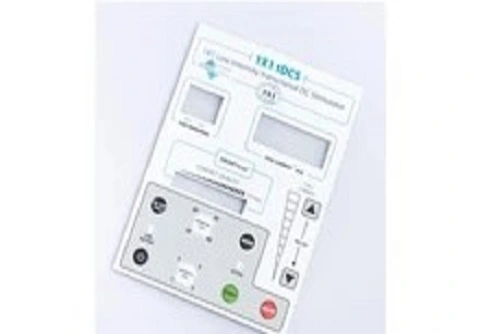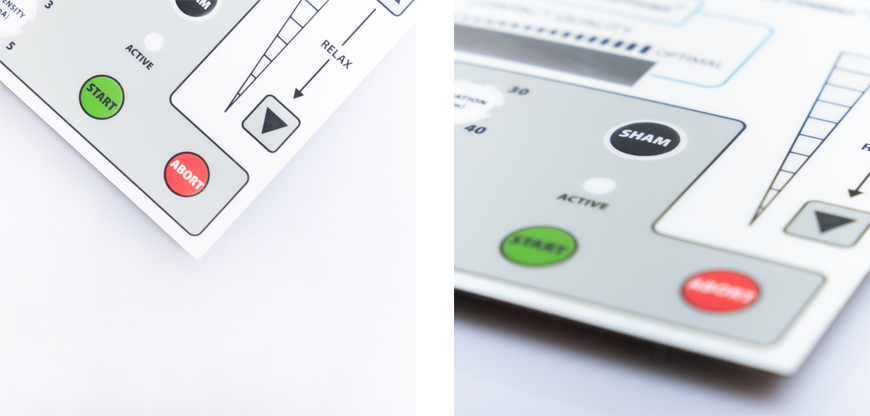
In today's fast-paced world, technology is constantly evolving to meet the needs of businesses and consumers alike. One such innovation that has gained prominence in various industries is the flat type membrane switch. This versatile and efficient component has found applications in everything from consumer electronics to industrial equipment. In this article, we will delve into the intricacies of flat type membrane switches, exploring their construction, working principles, applications, advantages, and much more. So, let's embark on a journey to unravel the world of flat type membrane switches.

Flat type membrane switches are widely used in modern electronic devices due to their slim profile, user-friendly design, and reliable performance. These switches are made from flexible materials and offer a durable, low-profile interface solution, making them ideal for applications where space-saving and simplicity are crucial. They are versatile and can be found in everything from consumer electronics to industrial machinery, offering an efficient and cost-effective way to manage device control.
A flat-type membrane switch is composed of several layers that work together to create a functional and durable interface. Each layer plays a specific role in the switch's overall performance. The main components include:
Membrane Layer: This is the topmost layer of the switch, made from a flexible material such as polyester or polyimide. It forms the interface that the user interacts with. The membrane is printed with symbols, buttons, and other interface elements that are visible to the user. It provides the physical barrier that users press to activate the switch.
Conductive Traces: Located beneath the membrane layer, the conductive traces are made from conductive materials such as silver or copper. These traces are printed onto a flexible substrate and form the circuit pathways. When pressure is applied to a button on the membrane layer, these conductive traces come into contact with each other, completing the circuit and signaling the control unit to perform the corresponding action.
Graphic Overlay: The graphic overlay is the topmost visible layer of the membrane switch. It displays the functional buttons, labels, and any icons or symbols that guide the user in interacting with the switch. This overlay can be customized to fit specific branding or design requirements. It is often made from durable materials like polyester, polycarbonate, or acrylic, providing both protection and aesthetic appeal.
Adhesive Layer: The adhesive layer bonds the membrane switch to the surface of the device it controls. It ensures that the switch remains securely attached to the device while maintaining the flexibility needed for pressure-sensitive activation. The adhesive used is typically a strong, pressure-sensitive type, allowing easy application without damaging the underlying surface.
Flat type membrane switches work on the principle of pressure-sensitive input. When a user presses down on a specific area of the graphic overlay, the pressure causes the membrane layers to compress. This compression brings the conductive traces in contact with each other, completing the electrical circuit.
The signal generated by this contact is transmitted to the device's control unit, which interprets the input and carries out the corresponding function, such as turning on a light, adjusting the temperature, or activating a device. The pressure-sensitive nature of the switch ensures that only deliberate presses trigger the action, providing a reliable and responsive user interface.
Some flat type membrane switches also include additional features such as tactile feedback, where users feel a slight resistance or click when a button is pressed, and visual feedback via integrated LED lighting, which can indicate the activation state of the switch.
Flat type membrane switches are used in many industries due to their versatile design, compact size, and reliable performance. They offer a range of applications, including:
Consumer Electronics: Flat type membrane switches such as microwave membrane switch are widely used in devices like remote controls, keyboards, microwave ovens, smartphones, and home appliances. Their thin profile allows for sleek, modern designs, while the customizable graphic overlays allow for easy integration into a wide range of electronic products.
Medical Devices: In the medical field, flat type membrane switches are found in patient monitoring systems, diagnostic equipment, and medical diagnostic panels. The durability, ease of cleaning, and the ability to withstand harsh conditions make them suitable for the demanding healthcare environment. The user-friendly interface is also essential for healthcare professionals who need to operate devices quickly and efficiently.
Industrial Control Panels: In industrial settings, flat type membrane switches are used in control panels, machinery interfaces, automated systems, and robotic controls. These switches can withstand harsh industrial environments, including exposure to dust, moisture, and temperature fluctuations. Their space-saving design is ideal for large-scale systems where interface control must be efficient and simple.
Aerospace and Automotive: In both aerospace and automotive applications, flat type membrane switches are used in cockpit controls, vehicle dashboards, climate control panels, and infotainment systems. These switches need to be reliable under extreme conditions, such as vibration, high temperatures, and frequent use. The durability and tactile feedback make them a preferred choice for cockpit interfaces and vehicle controls.
Flat type membrane switches offer a compact, reliable, and user-friendly solution for a wide range of applications across various industries. Their combination of simple construction, ease of use, and versatility make them an ideal choice for consumer electronics, medical devices, industrial systems, and more. As technology advances, the continued evolution of flat type membrane switches will ensure they remain a key component in user interface design, providing efficient control and enhanced user experiences.
Q: Are membrane switches susceptible to wear and tear?
A: Flat type membrane switches are designed to be durable and resistant to wear and tear. With proper care and maintenance, they can have a long lifespan.
Q: Can membrane switches be used in outdoor applications?
A: Yes, membrane switches can be designed to withstand outdoor conditions, including exposure to moisture and sunlight.
Q: Are membrane switches suitable for high-temperature environments?
A: Certain types of membrane switches are designed to operate in high-temperature environments, making them suitable for industrial and automotive applications.
Q: Can I get a custom design for my membrane switch?
A: Yes, manufacturers offer customization options for membrane switches, allowing you to choose the design, layout, and graphics that best suit your needs.
Q: How do I clean a flat type membrane switch?
A: Cleaning a membrane switch is easy. Simply use a mild detergent and a soft cloth to wipe the surface gently.